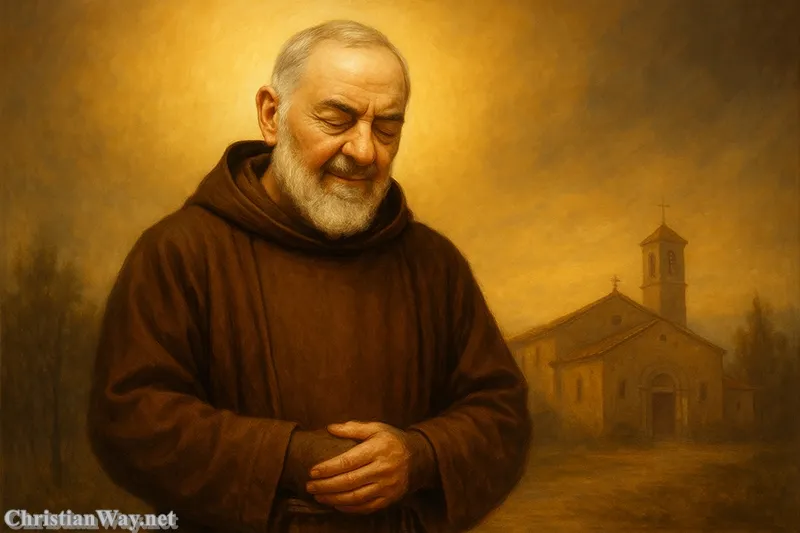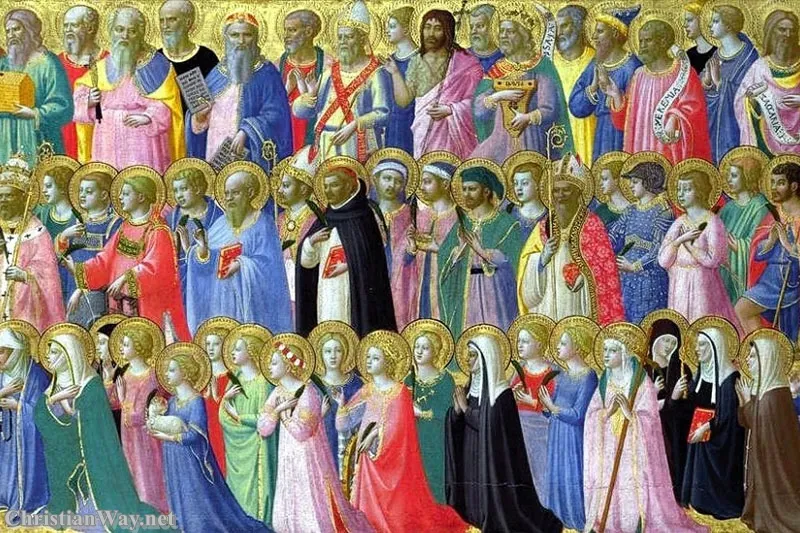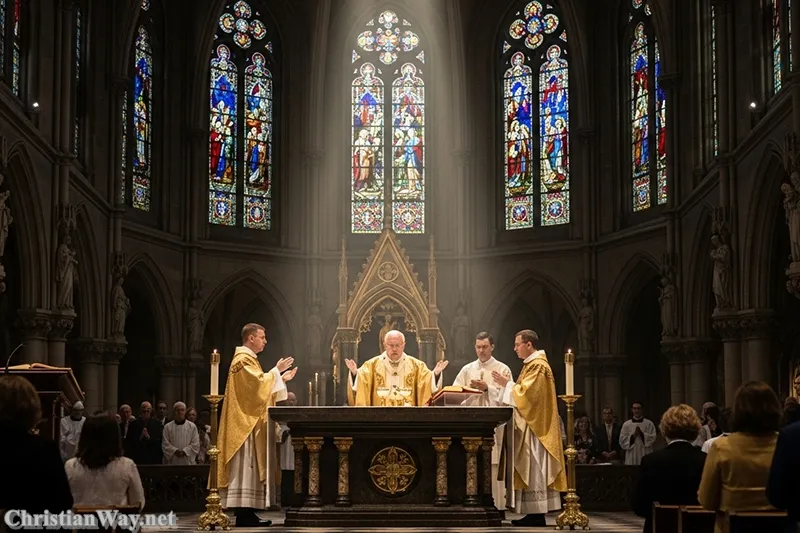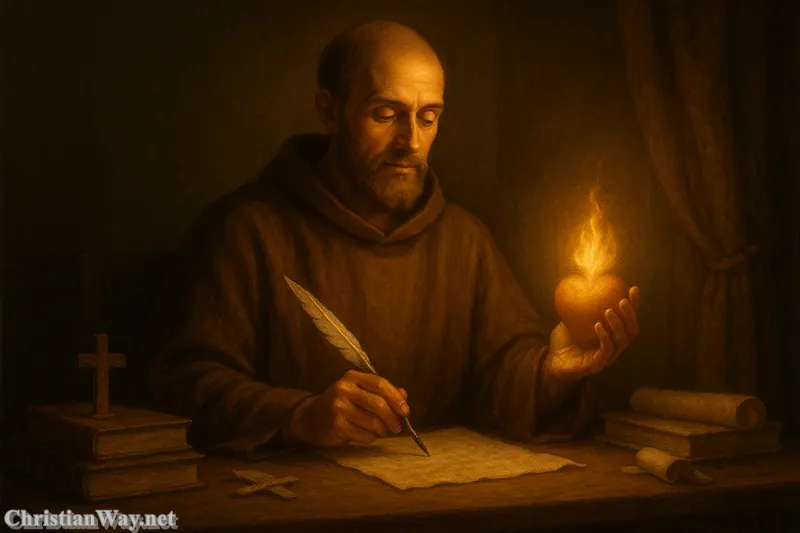Dear friends in Christ,
There are moments in life when everything changes — when pride becomes humility, fear turns into faith, and ambition transforms into service. For Saint Ignatius of Loyola, such a moment came not on a battlefield of glory, but on a battlefield of grace.
This noble soldier, once driven by worldly honor, became a warrior for Christ — founding the Society of Jesus, known as the Jesuit Order, and shaping the spirituality that would renew the Church and guide souls for centuries.
The story of Saint Ignatius of Loyola is one of conversion, discernment, and mission. His legacy is not confined to the past; it continues to shape Christian education, prayer, and spiritual formation across the world.
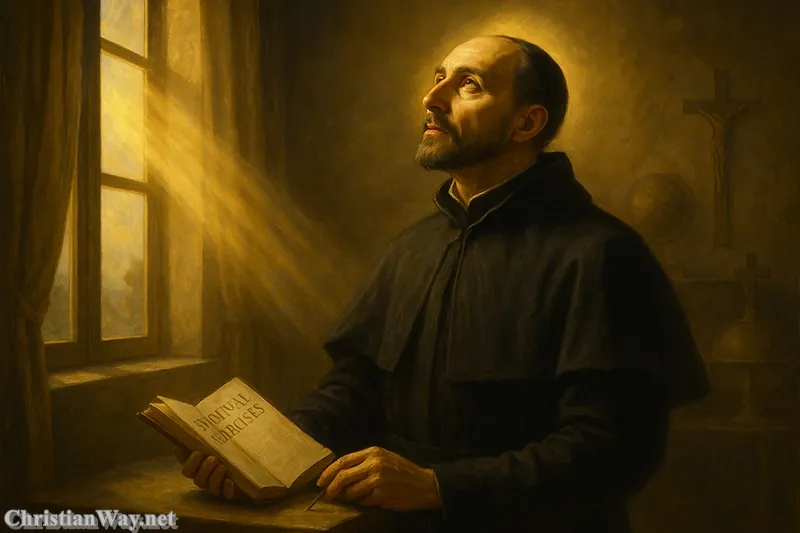
Through his masterpiece, the Spiritual Exercises, and the movement of Ignatian spirituality, he invites us to listen — deeply, honestly — for the quiet voice of God within our hearts and to respond with courage: “Take, Lord, and receive.”
Let us walk through the life and spirit of this great saint, whose journey from soldier to saint still teaches us how to fight the good fight — not with swords, but with love.
The Early Life of Saint Ignatius of Loyola — From Ambition to Wound
A soldier of worldly glory
St Ignatius of Loyola biography begins in 1491 in Loyola, Spain, in the Basque region. Born into nobility, Ignatius (Iñigo López de Loyola) was raised in a world of chivalry, honor, and courtly life. From an early age, he was drawn to adventure, dreaming of fame and knightly valor.
He served as a page in the royal court and later became a soldier in the service of the Duke of Nájera. Courageous and daring, he sought distinction in battle — until the Lord intervened.
In 1521, during a siege at Pamplona, a cannonball shattered his leg. The proud soldier was brought low, his dreams of glory broken in an instant. Yet what seemed like defeat was the beginning of salvation.
The Conversion of Saint Ignatius — A Wound that Opened the Soul
The turning point of grace
As Ignatius lay recovering, he asked for romantic tales to pass the time. None were found in the household library — only The Life of Christ and the Lives of the Saints.
Reluctantly, he began to read — and slowly, his heart was pierced. He noticed that when he imagined worldly exploits, he felt excitement that soon faded. But when he read of the saints, he felt peace, joy, and a desire to imitate them.
This was the seed of what he would later call discernment of spirits — learning to distinguish between thoughts that lead toward God and those that lead away from Him.
In his own words, he realized:
“When I gave myself to vain thoughts, I was left dry and dissatisfied; but when I thought of serving God, I felt consolation and peace.”
Moved by this grace, he resolved to follow Christ the King and lay down his sword forever.
The Pilgrimage and Conversion Journey
From Loyola to Montserrat to Manresa
Once healed, Ignatius made a pilgrimage to the Benedictine shrine of Montserrat. There, before the statue of Our Lady, he laid down his sword and spent the night in prayer — dedicating himself to the service of Christ and His Mother.
Then he traveled to Manresa, where he spent months in solitude, penance, and contemplation. In a cave near the river Cardoner, he underwent profound spiritual experiences — insights that would later form the foundation of his Spiritual Exercises of St Ignatius.
During this time, he learned the art of discernment, understanding how the Holy Spirit speaks to the heart through peace, love, and humility, while the enemy seeks to disturb with confusion and despair.
He later wrote:
“It is not much knowledge that fills and satisfies the soul, but the inner feeling and savoring of things.”
This period of interior struggle and grace was his true novitiate — transforming a wounded soldier into a mystic warrior of Christ.
The Call to Study and Serve
From student to spiritual leader
After his conversion, Ignatius realized that zeal alone was not enough — he needed formation. Though in his thirties, he began studying Latin with young boys in Barcelona, then philosophy and theology at the University of Paris.
There he met a small group of companions who shared his vision: Francis Xavier, Peter Faber, and others who would become the first members of the Society of Jesus. Together they vowed poverty, chastity, and obedience, dedicating themselves to serve Christ wherever the Church might send them.
Their motto became: “Ad Majorem Dei Gloriam” — For the Greater Glory of God.
This motto would define the spirit of the Jesuits, uniting prayer with action, contemplation with mission, intellect with love.
The Founding of the Society of Jesus
A new order for a new age
In 1534, at Montmartre, France, Ignatius and his companions made solemn vows. Six years later, Pope Paul III approved their order, the Society of Jesus (Societas Jesu), in 1540.
Ignatius became its first Superior General, guiding the Jesuits with a blend of spiritual depth and practical wisdom. Under his leadership, the order grew rapidly, sending missionaries across the globe — to India, Japan, Africa, and the Americas — igniting the great missionary spirit of the Counter-Reformation.
The Jesuits became known for their education, preaching, and spiritual direction, founding universities and schools dedicated to both faith and excellence. They taught that holiness is not withdrawal from the world but engagement — to “find God in all things.”
The Spiritual Exercises of Saint Ignatius — A Path to Discernment
A guide to knowing and following God’s will
The Spiritual Exercises of St Ignatius remain one of the most influential works of Christian spirituality. Written from his experiences in prayer, the Exercises are a structured retreat designed to help a person encounter Christ personally and discern God’s will.
Over the course of four “weeks,” retreatants meditate on creation, sin, the life of Christ, His passion, and His resurrection — always seeking to love and serve God more deeply.
Ignatius’s goal was not simply self-improvement but total transformation:
“Man is created to praise, reverence, and serve God our Lord, and by this means to save his soul.”
Central to his teaching is discernment of spirits — recognizing the movements of consolation (that draw us closer to God) and desolation (that lead us away). By reflecting prayerfully on these movements, one learns to listen to the gentle voice of the Holy Spirit guiding the heart.
Ignatian Spirituality — Finding God in All Things
A spirituality for everyday life
Ignatian spirituality teaches that God is present in every moment, not only in church or prayer but in work, relationships, and ordinary life. It calls us to live with gratitude, awareness, and purpose — to “see all things new in Christ.”
One of the simplest and most beautiful Ignatian practices is the Examen Prayer — a daily reflection of gratitude and awareness, inviting the Holy Spirit to show where God was present during the day.
The Examen includes five simple steps:
- Give thanks to God for His presence.
- Ask for light to see clearly.
- Review the day with gratitude and honesty.
- Ask forgiveness for failures.
- Renew hope and resolve for tomorrow.
Through such prayer, Saint Ignatius teaches us that holiness is not a distant ideal but a daily habit of attention and love.
Saint Ignatius the Missionary — A Heart for the World
Though Ignatius himself remained in Rome after founding the Jesuits, his heart was missionary. He sent out his companions across the world, beginning with Saint Francis Xavier, whose evangelization of Asia fulfilled Ignatius’s dream of bringing the Gospel to all nations.
Under his guidance, the Jesuits became a global force for renewal — defending the faith, educating the young, and bringing the Gospel to new lands. They became known as the “soldiers of Christ,” but their weapons were not swords — they were knowledge, compassion, and prayer.
Ignatius’s missionary vision was always grounded in love:
“Go forth and set the world on fire.”
This fire was not destruction, but zeal — the fire of divine love that illuminates every human heart.
Teachings of Saint Ignatius of Loyola
1. Seek the greater glory of God
Everything we do should aim for Ad Majorem Dei Gloriam — the greater glory of God.
2. Discern God’s will through prayer
Learn to notice the inner movements of your heart. God’s peace is the surest guide.
3. Be a contemplative in action
Find God not only in silence but in service, not only in monasteries but in the marketplace.
4. Love without measure
Serve God with generosity and joy, remembering Ignatius’s prayer:
“To give and not to count the cost.”
5. Trust that God labors for us
Ignatius saw the world as a divine collaboration — God working in and through every soul that says yes.
The Final Years of Saint Ignatius
In his final years, Ignatius lived in Rome, guiding the growing Jesuit Order through countless letters and spiritual directions. His administrative duties were immense, yet his heart remained anchored in prayer.
He often spent hours in silence before the Blessed Sacrament, finding strength for the Church’s many missions.
In 1556, after years of tireless service, he fell ill and died peacefully, whispering the name of Jesus — the One whom he had served so faithfully. He was canonized by Pope Gregory XV in 1622, the same year as Saint Teresa of Ávila and Saint Francis Xavier. His feast day is celebrated on July 31.
The Legacy of Saint Ignatius of Loyola
The influence of Saint Ignatius of Loyola is vast and enduring. His Spiritual Exercises continue to guide countless retreats worldwide. Jesuit education has shaped thinkers, leaders, and saints. His insights into discernment have become a compass for spiritual direction.
He is rightly called the saint of spiritual formation, the master of discernment, and the apostle of the interior life.
His greatest legacy is not an institution but a way of seeing — the conviction that God can be found in all things, that every moment holds a call to love, and that holiness is possible for all.
Saint Ignatius and the Modern World
In our restless, noisy world, Ignatius offers a spirituality of listening. His example teaches that even the wounds of failure can become places of grace. He reminds us that to serve Christ is to find purpose — not in power, but in love.
The Jesuit Order, now serving in over 100 countries, continues his mission in education, social justice, science, and evangelization. Through their work, Ignatius’s spirit lives on: a balance of faith and reason, contemplation and action, intellect and compassion.
He remains a saint for seekers — for those who struggle, question, and search. For all who ask, “Lord, what do You want of me?”, his life gives an answer: “To find God in all things, and to do all things for His greater glory.”
🕯️ Reflect and Pray
Take, Lord, and receive all my liberty,
my memory, my understanding, and my entire will.
All that I have and call my own,
You have given to me; to You, Lord, I return it.
Everything is Yours; do with it what You will.
Give me only Your love and Your grace,
that is enough for me.
Amen.
— Prayer of Saint Ignatius of Loyola
May the discernment and devotion of Saint Ignatius guide your heart,
and may you, too, live for the greater glory of God.
— Fr. John Matthew, for Christian Way

